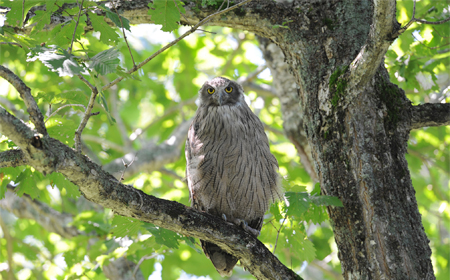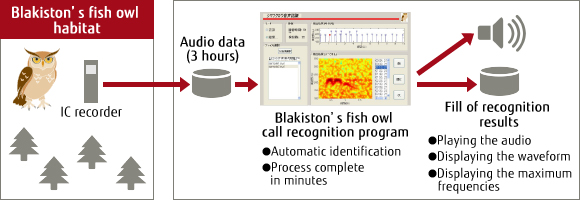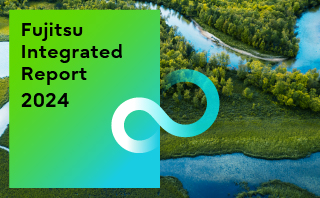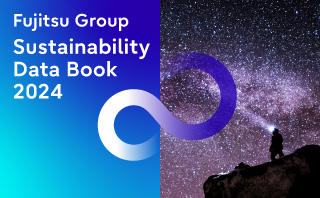-
Sustainability at Fujitsu Group
- Sustainability Management in the Fujitsu Group
- GRB(Global Responsible Business)Goals and Achievments for FY2022
- GRB(Global Responsible Business)Goals for FY2025
- Fujitsu's accessibility
- Stakeholder Engagement
- United Nations Global Compact
- SDG-related Activities in Fujitsu
- External Recognition and Awards
-
Global Responsible Business
- Environment
-
- Environmental Management
- The Fujitsu Group Environmental Vision on Climate Change
- Living in Harmony with Nature (Conservation of Biodiversity)
- Environmental Action Plan
- Environmental Data
- Environmental Communication
- Environmental Social Activities
- Disposal and Recycling of ICT products
- Environmental Considerations in ICT Products
- Governance
-
Data and Documents
- Fujitsu Group Sustainability Data Book 2024
- Social, Governance and Environmental data
- Independent Assurance Report

- GRI Standards / United Nations Global Compact (UNGC) principles Comparison Table
- SASB Standards Comparison Table
- Sustainability Information Disclosure Framework
- Link to regions responsible business reports
- Contact
- Sitemap
Blakiston’s Fish Owl Call Recognition Project
Protect the Endangered Blakiston's Fish Owl!
 Photo courtesy of the Wild Bird Society of Japan
Photo courtesy of the Wild Bird Society of Japan
Blakiston's fish owl is a critically endangered species. Only about 160 of these owls have been confirmed to exist in the eastern and central areas of Hokkaido, Japan. With the objective of establishing a sanctuary to protect the owls, the Wild Bird Society of Japan (WBSJ) has been conducting research to gain better understanding of their habitat. Previously, IC recorders were installed in the investigation areas to record sounds during night, and then the recorded data were collected and played using commercial software. Blakiston's fish owls were identified by visually inspecting the audio spectrum and listening to the actual sounds.
However, this method had various issues, such as processing three hours of audio data, which requires about one hour, data analysis taking too much time, and the possibility of oversight as it was essentially relying on human senses.
In the hope of assisting WBSJ's efforts in protecting the endangered Blakiston's fish owl, Fujitsu decided to provide them with Blakiston's fish owl call recognition software for the purpose of shortening the audio data analysis time and improving the reliability of investigations.
Significant Reduction in Analysis Time by Automatic Detection of Owl Call (Voice)
The Blakiston's fish owl call recognition software automatically detects and extracts the calls of Blakiston's fish owl from input audio data by comparing it with template data of their calls. Extracted data can be examined by displaying the call spectrum, playing the audio, displaying the frequencies, and displaying the call intervals.
The present software shortened analysis time required for processing the three-hour audio data from one hour to several minutes. It also enabled accurate detection of owl calls.

Blakiston's fish owl habitat survey
VOICE

Junkei Matsumoto, Conservation Project Room, WBSJ
"The investigation into Blakiston's fish owl habitat used to require inspectors to individually listen to the actual ambient sound all night long. When timer recorders (IC recorders) became commonly available, we started to investigate a much wider area with a smaller number of people assigned. However, this method still has the issue of requiring analysis for every recording device installed and for the entire hours recorded. For example, currently, we install about 20 pieces of recording equipment along rivers and record sounds for two hours after sunset every month, for about two weeks each month. This means one investigation session produces 600 hours (20 pieces x 2 hours x 15 days) of data. Analysis of audio data by listening to the sounds and viewing the audio spectrum requires nearly 1 hour for 2 hours of data. As we conduct investigations every month, analysis can never keep up with the amount of data produced".
"Thankfully, though, using the Blakiston's fish owl call recognition software provided this time, analysis of one data set is completed in 5 minutes or so, and 40 hours of data obtained in one day can be investigated in about 1.5 hours. This call recognition software not only made it easier for us to find the owl's habitat by expanding the investigation area, but also allowed us to reduce the number of inspectors required and the amount of cost involved in the investigation. We plan to progress and expand our information collection program by using the call recognition software for the purpose of conserving the habitat of the Blakiston's fish owl".
- This project has been certified as a project recommended by "Japan Committee for UNDB (UNDB-J)"

Certified by UNDB-J
- This project was published in "Examples of Private Sector Engagement in Biodiversity" (Ministry of the Environment).
More details here: "Examples of Private Sector Engagement in Biodiversity" (Ministry of the Environment) : Page at 23 (Japanese only)![]()
- This project was selected as an example of promotional video for the Biodiversity Business Contribution Project (Ministry of the Environment, Keidanren).
More details here: Biodiversity Business Contribution Project (YouTube)![]()
Related Links
- Fujitsu Uses ICT to Support Study of Blakiston's Fish Owl Habitat in Eastern Hokkaido [Press releases]
- Fujitsu Support for Blakiston's Fish Owl Habitat Survey Honored by Japan Nature Conservation Awards [Press releases]
- Fujitsu Receives 2018 Nikkei Global Environmental Technology Award for Developing a System to Survey Wildlife Habitat Using Sound Information [Press releases]


